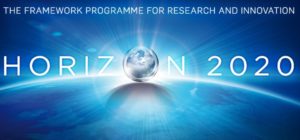Synergies between Horizon 2020 and European Structural and Investment Funds: not yet used to full potential, according to a new report by the European Court of Auditors (ECA). Various building blocks needed to create these synergies were not yet in place in the 2014-2020 period. The European Commission and authorities which manage funds in EU countries do not cooperate thoroughly, and fund managing authorities in the Member States often work in compartmentalised, silo-based structures that prevent them from using the funds in a complementary way. This limits the implementation and impact of research and innovation (R&I) related investments, and hampers efforts to close the R&I divide in Europe.
 Between 2014 and 2020, the EU dedicated 12 % of its budget to R&I, more than ever before. Of this, €76.4 billion came from Horizon 2020, and almost €41 billion from the ESIF. The auditors checked whether the Commission and managing authorities in EU countries had taken the requisite steps to create synergies between the funds in order to ensure that they produced a greater effect than individual interventions.
Between 2014 and 2020, the EU dedicated 12 % of its budget to R&I, more than ever before. Of this, €76.4 billion came from Horizon 2020, and almost €41 billion from the ESIF. The auditors checked whether the Commission and managing authorities in EU countries had taken the requisite steps to create synergies between the funds in order to ensure that they produced a greater effect than individual interventions.
“At a time when citizens depend on our researchers and innovators in so many vital areas – from vaccine development to energy, green and digital transition – we must maximise the impact of R&I funding”, said Ivana Maletić, the ECA member who led the audit. “At first glance, Horizon 2020 and the ESIF might appear to be two different worlds with little in common. But they can achieve a greater impact by working in complement with each other. For this to happen, there needs to be cooperation from the very beginning, in both programme design and implementation.”
The auditors found that a number of factors instrumental to creating synergies between the funds had not yet been in place in the 2014-2020 period. First, the funds’ rules were not well aligned. The Commission has taken steps to remedy this in the 2021-2027 period, but it remains to be seen whether the changes will bring the expected impact. Second, although cooperation within the Commission improved during the 2014-2020 period, cooperation between the Commission and Member States, and within Member States themselves, was often patchy. Third, although it is essential to have information on projects and beneficiaries funded both by Horizon 2020 and the ESIF, no comprehensive database of all projects financed by the ESIF existed until March 2022. The database introduced since then is still not compatible with the Horizon 2020 database. The fourth factor was the expertise and managerial capacities of managing authorities in EU countries, which were found wanting, despite the support provided by the Commission.
For synergies to materialise, they need to be appropriately envisaged in strategic planning documents from an early stage. However, the auditors found that the ESIF’s strategic planning documents made few references to synergies with Horizon 2020. In addition, the priorities set out in these strategic documents were often too broad, which made it difficult to focus investments and create synergies. One synergy, the use of ESIF funding to exploit R&I results from Horizon 2020 projects was a particularly neglected area. One key reason for this was that the ESIF managing authorities simply did not know how to create synergies or how to find Horizon 2020 project results. The auditors say that this represents a missed opportunity for translating R&I results into practice. A further example is the Seal of Excellence, a quality label for positively evaluated Horizon 2020 proposals that were not funded due to a lack of resources. It has the potential to facilitate funding under the ESIF, but was only used to a small extent. Some other synergies, such as ESIF support for research centres to help projects compete for the more selective Horizon 2020 funding, had generally been realised.
Background information
Horizon 2020 and its successor Horizon Europe target excellence, while the ESIF is aimed at reducing regional disparities, including by supporting R&I. Synergies are particularly important for countries lagging behind in R&I, as they allow the use of Horizon 2020 and ESIF funds to be coordinated, producing a greater effect than either fund would achieve alone. Even more money has been allocated to R&I under Horizon Europe and the ESIF in the 2021-2027 period, and greater importance has been placed on synergies.
Special report 23/2022, “Synergies between Horizon 2020 and European Structural and Investment
Funds: not yet used to full potential”, is available on the ECA website. It complements ECA special
report 15/2022 on measures to widen participation in Horizon 2020.